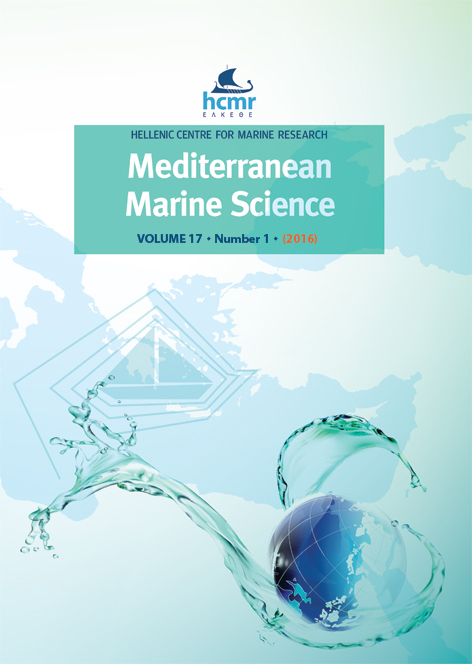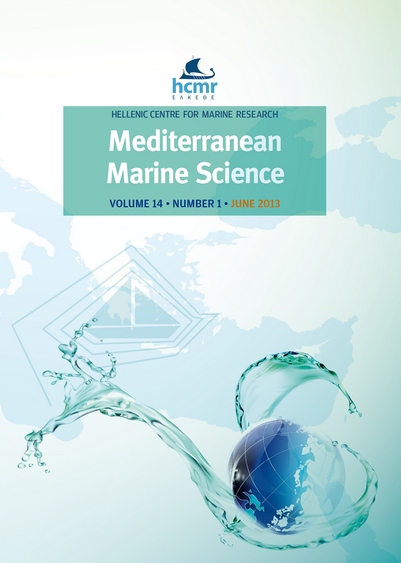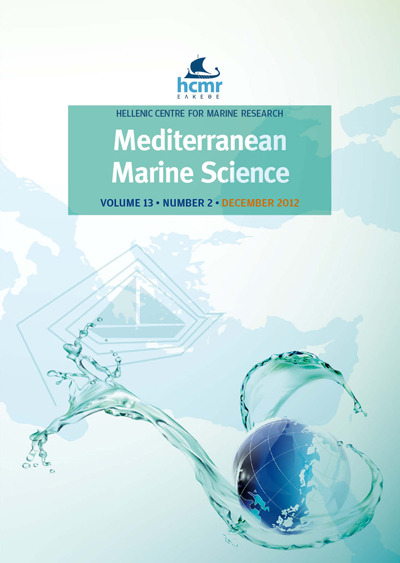Environmental conditions influencing the larval fish assemblage during summer in the Gulf of Gabes (Tunisia: South central Mediterranean)

Abstract
An oceanographic survey was carried out during the summer of 2009, from June 25 to July 3 in the Gulf of Gabes. The study area is characterized by a wide continental shelf.
A plankton sampling scheme was carried out to study the structure of the larval fish assemblages that characterizes the surface mixed layer, and to assess the influence of the environmental parameters on their spatial distribution.
A total of 36 taxa were identified, 3 classified to the level of genus, 5 to family and 28 to species. The majority of identified fish larvae belonged to demersal species, mainly picarel Spicara smaris (23.76% of the total larval fish abundance), followed by red mullet Mullus barbatus (14.92%) and several species of the Sparidae family (9.15%). Small pelagic species as Sardinella Sardinella aurita and European anchovy Engraulis encrasicolus were also abundant (27.75 %) and dominated the fish larvae community in offshore stations. Five large pelagic species were found among the larvae, including bullet tuna Auxis rochei, Atlantic black skipjack Euthynnus alletteratus, albacore Thunnus alalunga, swordfish Xiphias gladius and the highly migratory Atlantic bluefin tuna Thunnus thynnus. All these apex predator species appear in 38.5% of the sampling stations and contribute about 7.9% of the total larval catches.
The larval fish assemblage of the Gulf of Gabes is predominantly composed of neritic species in correspondence with the shallow depths of the study area. Canonical Correspondence Analysis (CCA) showed that larval distributions were mainly conditioned by depth. However, other factors, like hydrographic processes, play also a very important role in shaping the spatial pattern of larval fish distribution.
Article Details
- How to Cite
-
KOCHED, W. K., ALEMANY, F., BEN ISMAIL, S., BENMESSAOUD, R., HATTOUR Α., & GARCIA, A. (2015). Environmental conditions influencing the larval fish assemblage during summer in the Gulf of Gabes (Tunisia: South central Mediterranean). Mediterranean Marine Science, 16(3), 666–681. https://doi.org/10.12681/mms.1158
- Issue
- Vol. 16 No. 3 (2015)
- Section
- Research Article
Authors who publish with this journal agree to the following terms:
- Authors retain copyright and grant the journal right of first publication with the work simultaneously licensed under a Creative Commons Attribution Non-Commercial License that allows others to share the work with an acknowledgement of the work's authorship and initial publication in this journal.
- Authors are able to enter into separate, additional contractual arrangements for the non-exclusive distribution of the journal's published version of the work (e.g. post it to an institutional repository or publish it in a book), with an acknowledgement of its initial publication in this journal.
- Authors are permitted and encouraged to post their work online (preferably in institutional repositories or on their website) prior to and during the submission process, as it can lead to productive exchanges, as well as earlier and greater citation of published work (See The Effect of Open Access).






